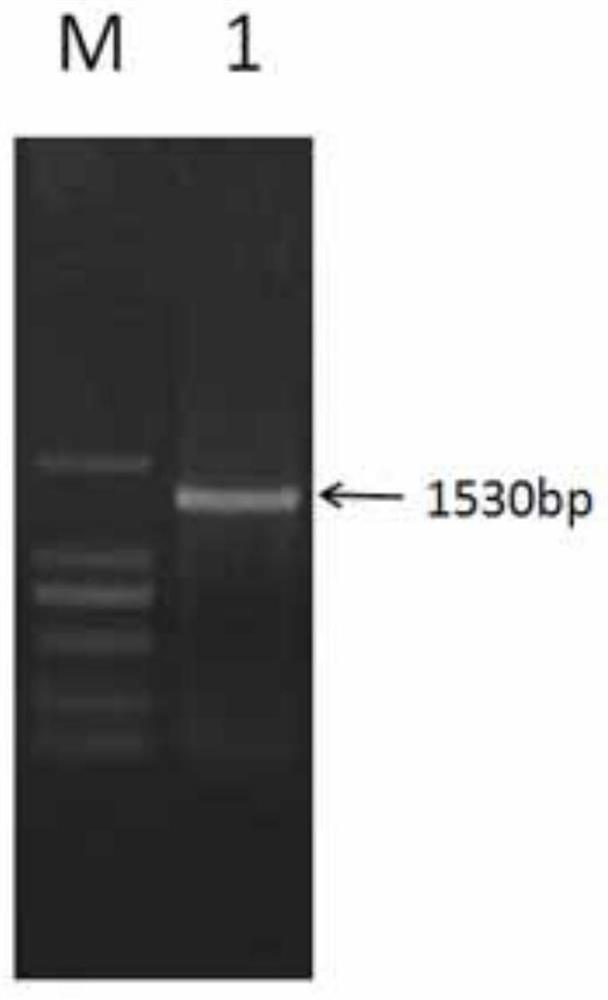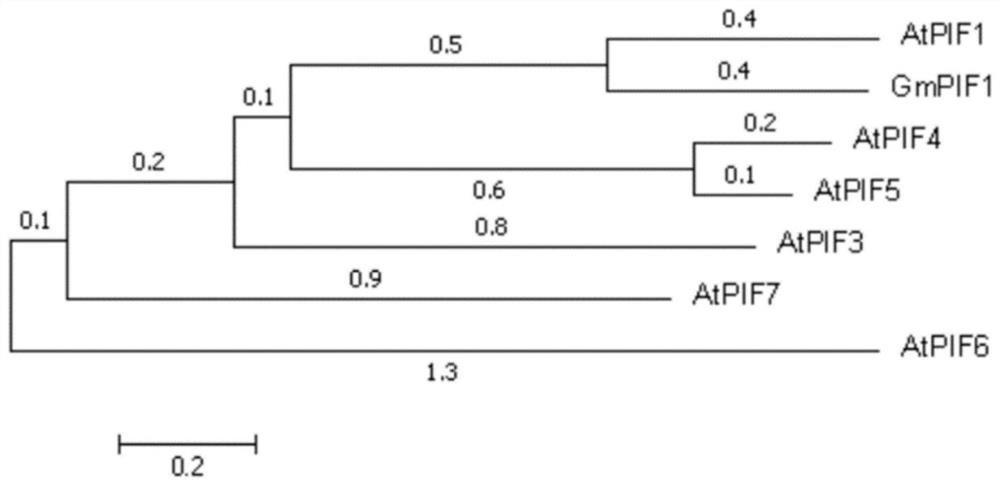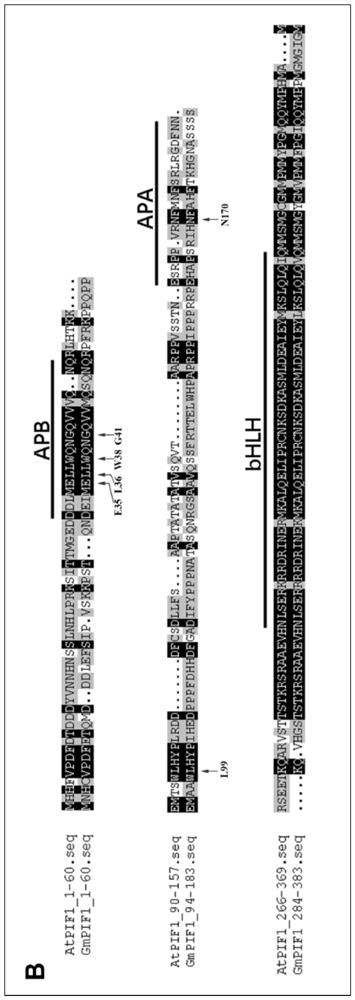Application of soybean bHLH transcription factor GmPIF1 gene in promoting isoflavone synthesis
A technology of transcription factors and isoflavones, which is applied in the fields of genetic engineering and molecular biology, can solve the problems that soybean GmPIF1 gene research has not been reported, and achieve the effect of high-efficiency synthesis
- Summary
- Abstract
- Description
- Claims
- Application Information
AI Technical Summary
Problems solved by technology
Method used
Image
Examples
Embodiment 1
[0029]Example 1: Cloning of the GmPIF1 transcription factor gene and its biological analysis
[0030] A group of genes whose expression levels increase with the development of soybean embryos were screened out from the constructed digital gene expression profiles of soybean Jilin 32 seeds at different stages. These genes are considered to have the potential to regulate the synthesis of soybean isoflavones, and GmPIF1 is one of them. bHLH class of transcription factors. Taking 40 mg of soybean Jilin 32 three compound leaves as a sample, RNAisoReagent (purchased from TaKaRa) was used to extract the total RNA of soybean variety Jilin 32 leaves, and the integrity of the RNA was detected by 1% agarose electrophoresis. Synthesis of cDNA was carried out according to the instructions of Reverse Transcriptase M-MLV (RNase H-).
[0031] According to the CDS sequence of GmPIF1 in NCBI, primer sequences were designed, and the full-length PCR product of CDS of GmPIF1 was obtained by rever...
Embodiment 2
[0042] Example 2: Tissue-specific expression analysis of GmPIF1 gene
[0043] The total RNA of the roots, stems, leaves, flowers, 20-day embryos, 30-day embryos, and 50-day embryos of soybean variety Jilin 32 were extracted and reverse-transcribed into cDNA. The method was the same as in Example 1. The expression of GmPIF1 gene in different soybean tissues was detected by relative fluorescence quantitative PCR (qPCR), according to SYBR○R Premix Ex Taq TM II (purchased from TaKaRa) instructions, using 7500 real-time fluorescence quantitative amplification instrument.
[0044] Using soybean β-tubulin as an internal reference gene, the primer sequence is:
[0045] tubulin-F:5'-GGAAGGCTTTCTTGCATTGGTA-3'
[0046] tubulin-R:5'-AGTGGCATCCTGGTACTGCA-3'
[0047] The quantitative primers for the GmPIF1 gene are:
[0048] GmPIF1-q-F: 5'-AAACCCAAATGGACGACGACTTA-3'
[0049] GmPIF1-q-R: 5'-TGGCCGTTTTGCCATAACAGTTC-3'
[0050] The PCR reaction system is as follows:
[0051]
[0052]...
Embodiment 3
[0055] Example 3: Subcellular Localization of Soybean GmPIF1 Gene
[0056] According to the CDS sequence of GmPIF1, primer sequences with restriction endonucleases BamH1 and Spe1 were designed, and the sequence of GmPIF1 containing restriction sites was obtained through subcloning.
[0057] The primer sequences are:
[0058] GmPIF1-YFP-F: 5'-CGGGATCCATGAATCACTGTGTTCCA-3'
[0059] GmPIF1-YFP-R: 5'-GGACTAGTTCATGTTTCGTCTGACTG-3'
[0060] According to the steps in Example 1, the PCR product obtained by subcloning was connected to the pMD18-T vector, then transferred into Escherichia coli DH5α and sent for sequencing, and the sequenced correct bacterial liquid preservation and extraction plasmid (pT-GmPIF1 / BamH1 / Spe1) were used for future use . The pT-GmPIF1 / BamH1 / Spe1 and the pHB-YFP plant expression vector with the CaMV 35S promoter were double-digested with BamH1 and Spe1 respectively, and the target fragments were gel-cut and recovered, and the recovered GmPIF1 fragment and ...
PUM
| Property | Measurement | Unit |
|---|---|---|
| molecular weight | aaaaa | aaaaa |
Abstract
Description
Claims
Application Information
 Login to View More
Login to View More - R&D Engineer
- R&D Manager
- IP Professional
- Industry Leading Data Capabilities
- Powerful AI technology
- Patent DNA Extraction
Browse by: Latest US Patents, China's latest patents, Technical Efficacy Thesaurus, Application Domain, Technology Topic, Popular Technical Reports.
© 2024 PatSnap. All rights reserved.Legal|Privacy policy|Modern Slavery Act Transparency Statement|Sitemap|About US| Contact US: help@patsnap.com










